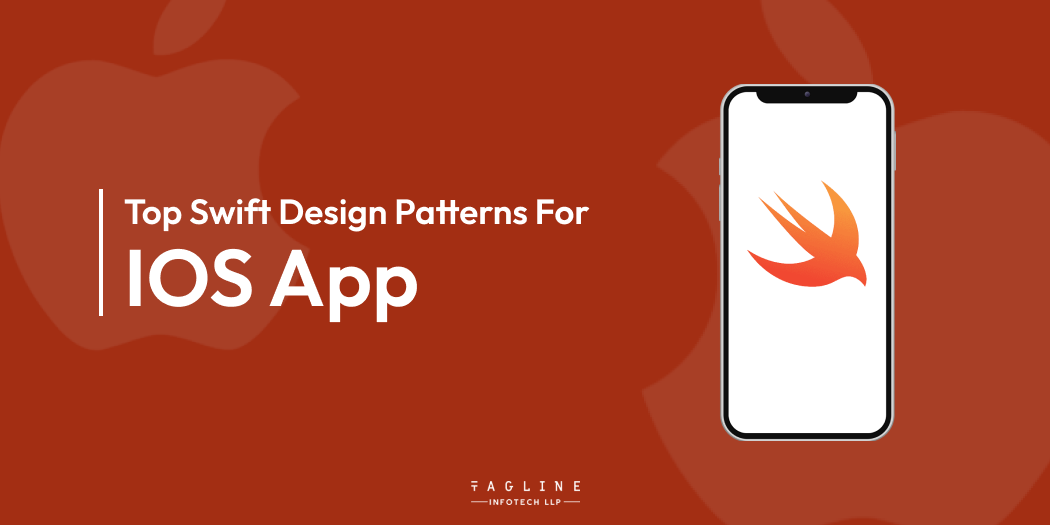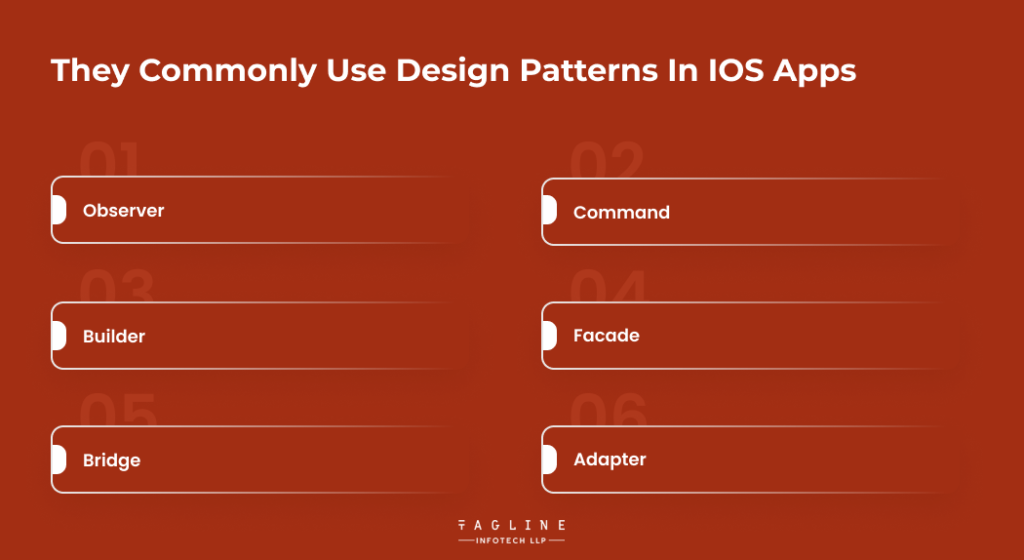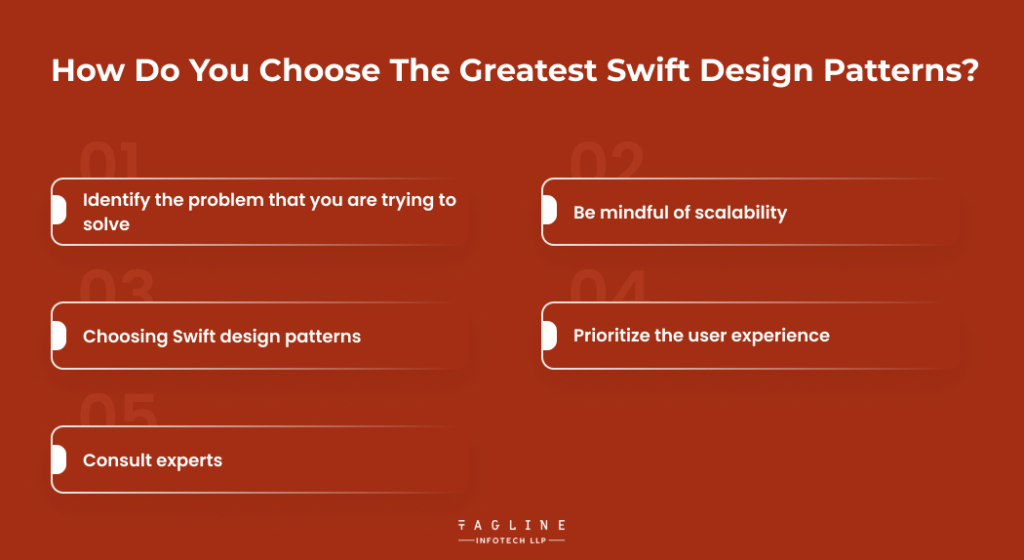What is Scalability in Cloud Computing? Types, Benefits,...
April 24, 2024
Home >> iOS Development >> Top Swift Design Patterns for iOS App

Quick Summary
Swift design patterns are crucial elements that provide reusable answers to developers who commonly encounter problems when creating iOS applications. These patterns enable developers to write code that other developers easily understand, scalable, maintainable, and of excellent quality. It is projected that the market for iOS applications will grow in 2024; thus, to give users the best experience possible, developers must stay current on the newest design trends. Developers may reduce the time spent on development, expedite the process of creating apps, and enhance app performance by utilizing Swift design patterns.
Throughout this essay, we shall look into the best Swift design patterns that iOS developers should consider using in 2024. We will discuss the many design patterns in this session, including creational, structural, and behavioral patterns, and how app developers can use them. Furthermore, we will go over some of the benefits of using Swift design patterns and show you some well-known iOS apps created using these patterns. Upon completing this blog, you will possess enhanced comprehension regarding selecting the suitable Swift design pattern for your ongoing tasks to create Swift programs.
Swift Design patterns are essential in creating scalable, reliable, high-quality programs while developing Swift applications. Reusable answers to common software design problems can be found in the design patterns employed in iOS. They make the process of reading, maintaining, and testing code easier by offering a standardized method for resolving a particular problem.
Various types of design patterns can be applied in the process of developing quick applications. The three types are behavioral, structural, and creational design patterns. So, let’s examine each of them in greater detail.
Design patterns for the many types of iOS app development:
Creational Pattern
Creating an object is the main emphasis for creational design patterns. They care about the procedure for initializing and setting up objects. Creational patterns are helpful for the building of iOS applications because they provide flexibility, reusability, and maintainability.
One of Swift’s most extensively used creational design patterns is the Singleton pattern. A single instance of a class can be created using the singleton technique and accessed from anywhere globally. This pattern is widely used to manage global resources, such as caches, network managers, and user preferences, among other things.
Structural Patterns
The core of structural design patterns, or “design patterns,” is how classes and objects are built to create larger structures. They facilitate code structure and make the numerous links between elements easier to understand. Structural patterns can help with flexibility, reusability, and maintainability in the development of iOS applications.
It is often known that one of the most popular structural design patterns in Swift technology is the Model-View-Controller (MVC) pattern. The Model, the View, and the Controller are the three interconnected components of the program, as per the MVC design. This pattern helps in the creation of applications that are both scalable and manageable by encouraging code reuse and separating concerns.
Behavioural Pattern
Regarding design patterns, behavioral design is all about how objects communicate and assign tasks to one another. They enable the determination of an item’s behavior as well as the simplification of the intricate interactions that take place between things. Behavioral patterns help promote adaptability, reusability, and maintainability within the application’s rapid app development framework.
“Thе Futurе of IOS Dеvеlopmеnt “
– Also Read Article

Observer behavioural design pattern uses a specific type of object called the subject. In a one-to-many connection, this pattern also entails keeping track of a list of dependents, referred to as the observers. Keeping an eye on specific items and informing all observers of any changes in the state of the objects under observation are the goals of the topic.
One typical example of a helpful objective that can be achieved with the Observer iOS design pattern is creating subscription services that can send notifications to an iOS device. In this conversation, the publisher is the topic, and the organization’s subscribers are the spectators.
One of the behavioural patterns that iOS app developers can use that shows the most adaptability is the Command pattern. It is an essential part of object-oriented programming. A command pattern converts a request into an object with all the information relevant to the request. After that, a range of requests can be parametrized for the request object.
The restaurant example is the most helpful method for comprehending how the Command iOS design pattern functions: A consumer (client) requests something, and an order is placed (a request is sent). The waiter, who serves as the director, takes the order; the cook, who serves as the receiver, turns the request into an item.
The Builder pattern is the most popular and frequently used among all the creational design patterns in Swift programming. By gradually dissecting complex object creation into several more manageable component objects, Builder allows developers to streamline the process.
Facade is a robust structural design pattern for iOS that is typically used to create user interfaces for complex programs with many classes that are easy to use. For developers who wish to separate subsystems like the file system, database, and remote server into layers, a Facade is quite helpful.
Standard Facade apps include those that can record and replay audio. Developers can hide the more intricate underlying code and methods that control audio sessions, recording, playback, and the file system by using Facade. As a result, the interface is more effective and straightforward.
Bridge is a Swift design pattern that lets programmers split classes or subclasses into abstraction and implementation hierarchies. Each hierarchy is responsible for a different set of tasks. As the name suggests, it serves as a bridge that connects these two classes to be used and modified separately.
Consider an application that allows users to choose from five visual elements in ten different colors to customize their profiles. Developers can assign colors to individual elements in the Bridge design, which speeds up the work needed for both hierarchies. This differs from the conventional approach, which calls for creating ten distinct iterations of each graphic element.
Rearranging interfaces to make them suitable for various objects is another Adapter structural design pattern responsibility. It covers up or envelops the item to comply with the selected interface. This allows interfaces that would not be able to understand and communicate with one another in the first place.
Imagine the following situation: a programmer is developing an app for Bitcoin exchanges and needs to pull information from a third-party live cryptocurrency tracker. Nevertheless, the data is written in a language the app’s coding cannot understand. This Swift design pattern can transform the data into code familiar to and compatible with the application.
Explore the top Swift design patterns for crafting efficient and scalable iOS apps.
Hire skilled iOS developers for your next project and unlock expertise in Swift design patterns, crafting high-performance applications

Choosing the best Swift design patterns is essential if you want to create a mobile application that is both competent and functional. These patterns, which have undergone extensive testing, offer conventional answers to the various issues that arise throughout the development of an application. As a result, they provide an integrated approach to creating and developing mobile applications. The following are some very crucial factors to consider when selecting the Swift design pattern for your mobile app design services:
In conclusion, using the Swift design pattern is crucial to creating high-quality iOS applications in 2023. Developers can write more understandable and practical code, reduce development time, and enhance the overall user experience of their programs by employing patterns like MVC, Decorator, MVVM, Observer, Singleton, and Factory. Companies looking to produce top-notch iOS applications in 2023. it is strongly recommended to get in touch with an iOS development company staffed by experts well-versed in Swift design patterns would be well-advised to work with iPhone app developers knowledgeable about Swift design patterns. By doing this, businesses can ensure that their apps are built using the best practices and standards, which eventually leads to exceptional applications packed with features that meet their specific needs.
The Model-View-Controller (MVC) pattern is considered one of the most popular iOS structures which are widely used by everyone.
There are mainly three types of design patterns for iOS development behavioural, structural, and creational design patterns.

Digital Valley, 423, Apple Square, beside Lajamni Chowk, Mota Varachha, Surat, Gujarat 394101
+91 9913 808 2851133 Sampley Ln Leander, Texas, 78641
52 Godalming Avenue, wallington, London - SM6 8NW